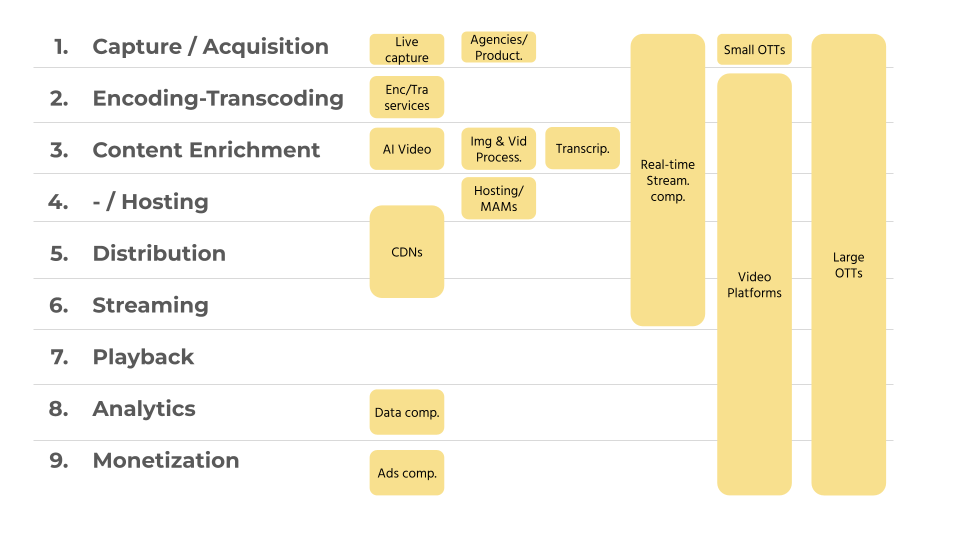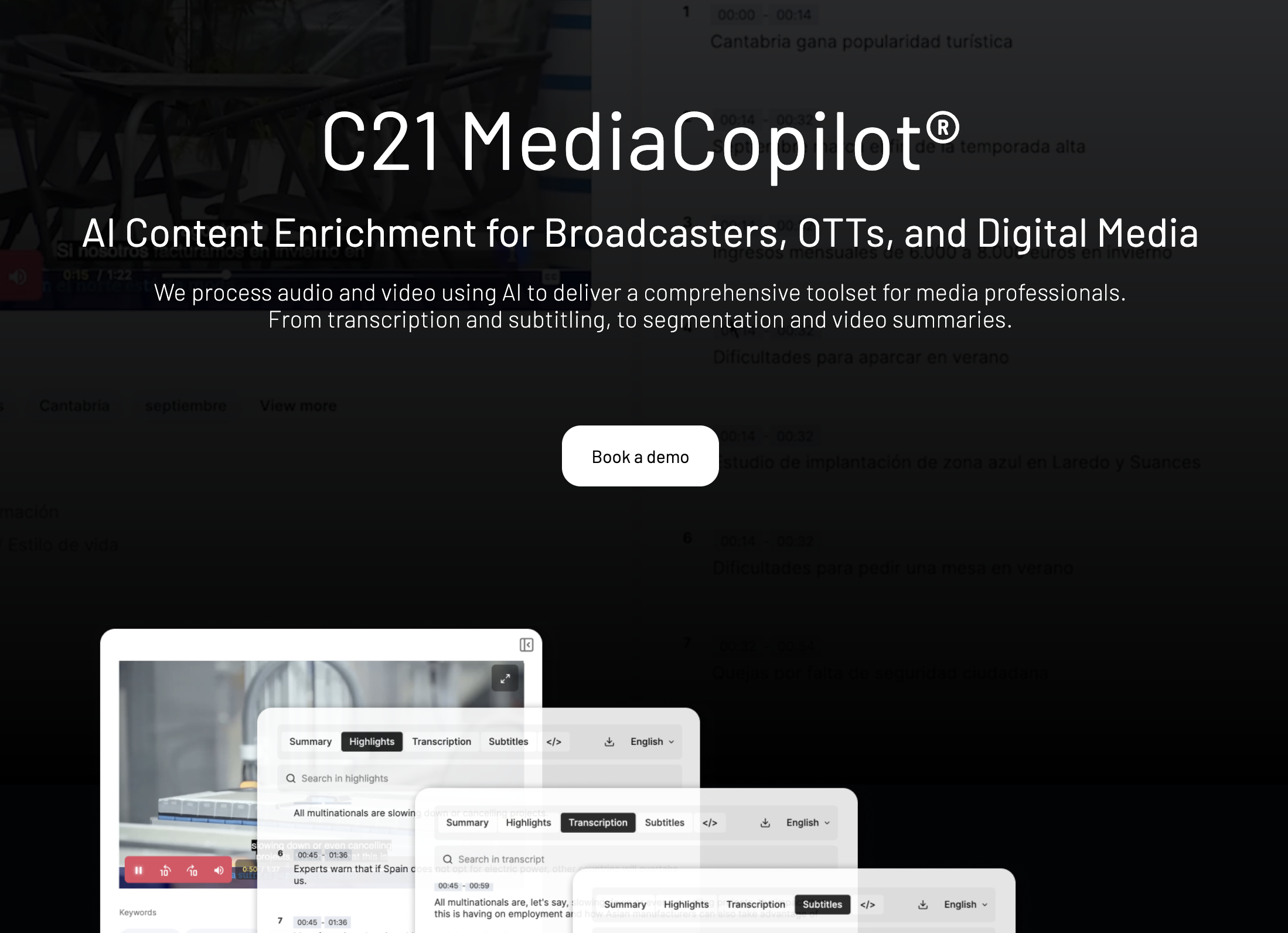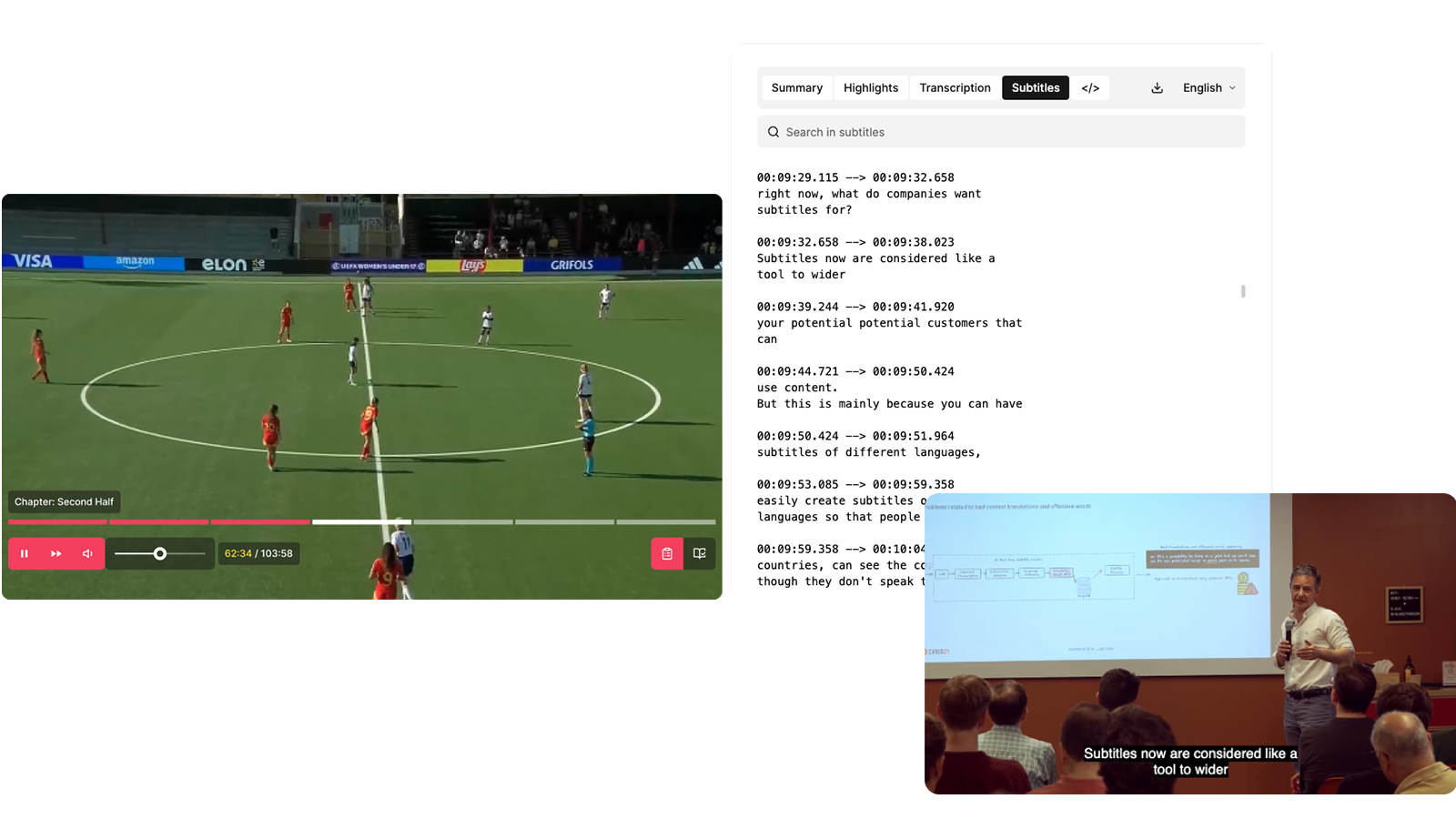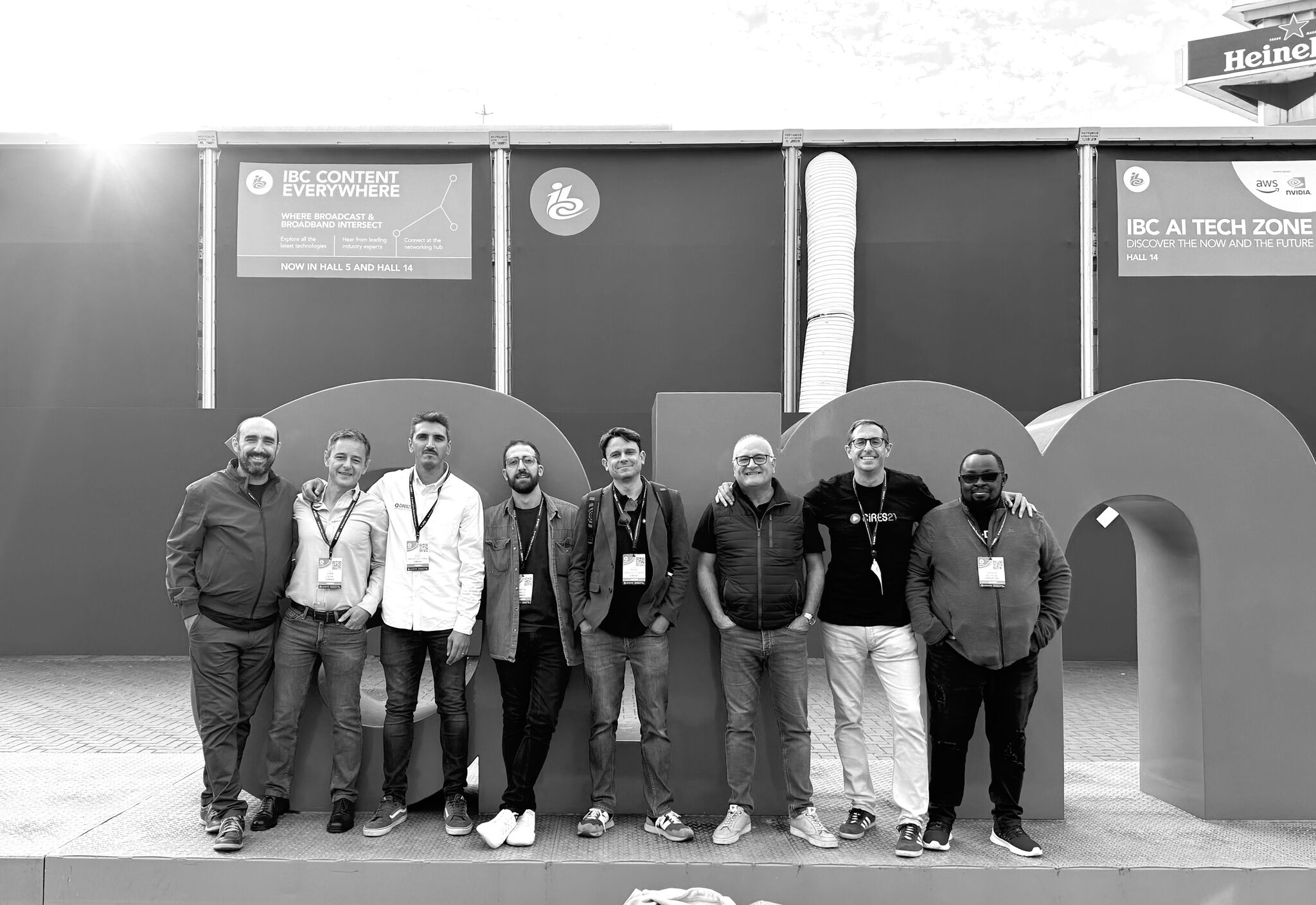If you are in the broadcasting or streaming industry, you no doubt know [Cires21] (https://cires21.com). In the last 15 years, Cires21 has become a leader in providing streaming solutions to the world’s largest broadcasters, including Eurovision Services, RTVE, and the BBC.
Their R&D team began experimenting with LLM-enabled transcription and embedding pipelines in Q1 2023, achieving production-ready projects with major broadcasters by Q1 2024. But they wanted to take it a step further: why not productize these capabilities—video transcription, translations, subtitles, summaries, clipping, etc.—into a software-as-a-service model?
That’s when Cires21’s CEO, Manuel Cardeñas, reached out to Vernon. With our track record of launching over 10 products from scratch, we were the natural choice. Could we help them pinpoint the market opportunity, define the value proposition, craft the go-to-market strategy, develop the MVP, and cultivate a startup product and tech culture—all within three months to make it on time for the industry’s largest event in Amsterdam? SIGN US UP.
We would never have agreed to such an audacious plan if not for Cires21’s robust in-house team. We were thrilled to work with a seasoned team, boasting veterans from Nokia, Atresmedia, and La Liga—including their newly appointed CTO at the time, David González. Together, we were confident we could pull it off.
We approached the project in four distinct stages:
1. Use cases, type of clients, and competitors
We began by mapping the broad and complex video value chain –for both live and OTT– and then zooming in the content enrichment layer. What are the main use cases? Who are the potential types of clients? We built a matrix to estimate the opportunity for each use case-client pair based on the size of the market, competition density, and the potential impact on cost-savings or new revenue opportunities.

Simplified (and non-confidential) value chain for video workflows
We then studied what the competitors were doing. How could we categorize them based on the use cases they address and their specialization in content enrichment versus vertical integration along the video value chain? We also explored the team’s vision on how players in adjacent layers of the value chain perceive the content enrichment opportunity.
With a clear map of opportunities laid out before us, we asked ourselves: which opportunities is Cires21 best positioned to seize?
2. Value Proposition and Go-To-Market Strategy
We thoroughly studied the current and upcoming technical building blocks being developed by R&D. Additionally, we conducted an honest session with the team to discuss their strengths and weaknesses in terms of culture, team, and capabilities. For instance, 15 years in the industry has built significant credibility, and their expertise in navigating long and complex enterprise sales cycles was evident.
Now we were in a position to define our value proposition: how we will help which type of clients. Preliminary decisions on pricing, marketing strategy, and sales channels logically followed. Sick tired of slides, we made it tangible in a (internal) strategy one-pager and a [landing page] (https://www.cires21.com/mediacopilot) that aligned the whole team.

MediaCopilot landing page from Cires21.
3. MVP Roadmap
With a clear understanding of the main use cases we wanted to address and a precise timeline for a demonstrable MVP, we worked with the tech team to translate these use cases into epics with a flexible scope. For each epic we would identify the minimum requirements to be able to qualify for the MVP and that would fit within weekly timeboxes. This phase also set a clear foundation for how an agile product development cycle should function with a small team, embracing weekly cycles amidst considerable uncertainty –according to our own style and experience.
4. Implementation and user feedback
As we developed the product on a weekly cadence, we began conducting user interviews with our target client types to understand how our work-in-progress product addresses their most pressing needs and could integrate into their existing workflows. We needed to move fast, so we initially defined the product on a “whiteboard” but we obviously encouraged as much direct feedback from clients as possible. This rapid input was crucial for iterating the value proposition, further refining the ideal customer profile, and prioritizing some use cases planned for post-MVP development, such as contextual search.

Some actual product screenshots
Happily, the product was unveiled at IBC in Amsterdam, resulting in a record number of engaging discussions with interested clients. Cires21 is onto something huge with MediaCopilot, but the more challenging journey now begins: evolving an initial product version into a global benchmark for Video AI, serving broadcasters, OTTs, and media companies.

Cires21 team at IBC 2024, Amsterdam.
If you think there may be an opportunity to work together, please reach out at [email protected].




